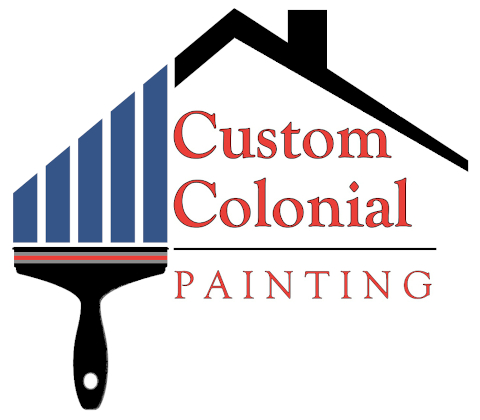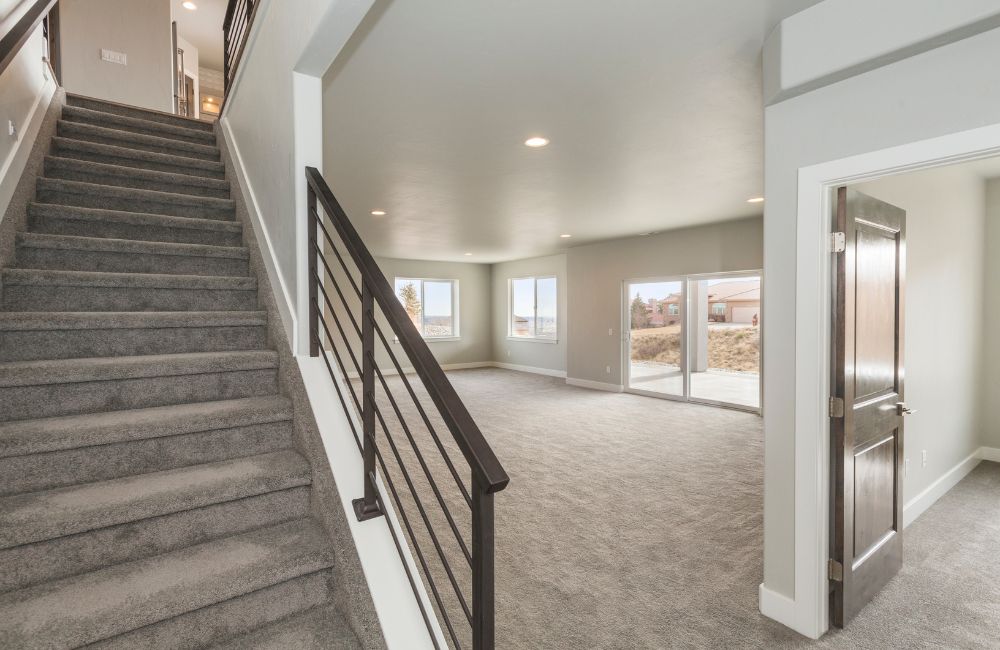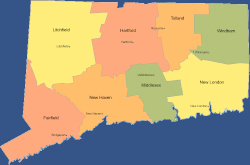Table of Contents
Key Takeaways
✔ The average cost to paint a 1,500 sq ft house interior typically ranges from $3,500 to $6,000, depending on materials and labor.
✔ Interior painting costs can vary based on wall condition, paint quality, prep work, and regional labor rates.
✔ Additional charges may come from furniture moving, wall repairs, or painting ceilings and trim.
✔ Savings can come from choosing off-peak seasons, handling prep work, and asking reputable painters like Custom Colonial Painting for tailored cost-saving options.
Painting the interior of a home is one of the most effective ways to give it a fresh, updated look without doing a full renovation. Whether the goal is to brighten up the space, change outdated colors, or prepare the home for sale, interior painting remains a popular and practical project.
But with rising material costs and varying labor rates across the country, many homeowners are wondering what kind of budget they’ll need in 2025. From paint quality to who’s doing the work, several factors can impact how much it will cost to paint a 1,500 square foot house.
Here are the key things to know when estimating the cost in 2025.
Average Cost to Paint a 1,500 Sq Ft House Interior
The total cost of painting a 1,500 square foot home can vary based on whether the project involves the interior or exterior of the house.
For interior painting, the average cost typically falls between $3,500 and $6,000. This works out to about $1 to $3 per square foot, depending on things like the quality of the paint, the condition of the walls, and how much prep work is needed.
Interior projects often include painting the walls, ceilings, and sometimes the trim, which can increase the overall price. However, pricing can vary significantly based on location, home layout, and labor rates, so it’s important to consult with reputable painters like Custom Colonial Painting to get a detailed and accurate estimate.
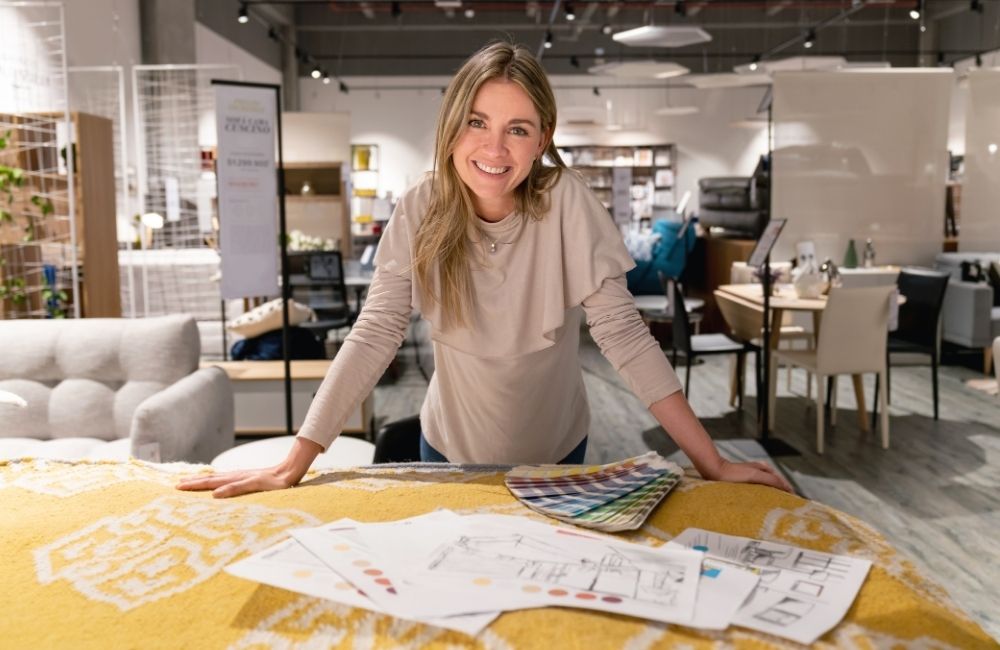
4 Major Factors That Affect Interior Painting Costs
Painting a home’s interior involves more than just picking a color and grabbing a brush. Several factors can impact how much a homeowner might pay for a complete interior job. Whether the goal is to get a basic refresh or a full upgrade, knowing what affects the cost can help with planning and budgeting.
Here’s a closer look at what shapes the cost to paint a 1,500 sq ft house interior in 2025.
1. Size and Layout of the Home
The total square footage is one of the biggest cost drivers. A 1,500 sq ft house provides a general idea, but the layout also plays a big role in pricing.
- Open vs. Sectioned Layouts: Open-concept homes may require fewer hours of labor due to easier access and less detailed cutting in around edges and corners. Homes with many rooms, hallways, and alcoves often take longer to paint.
- Ceiling Height: Taller ceilings require more prep, tools like scaffolding or ladders, and extra paint. This increases both labor time and materials used.
- Number of Rooms: A 1,500 sq ft home with more rooms means more edges, trims, and color transitions, which can increase costs.
2. Wall Condition and Prep Work Needed
Before paint ever touches the wall, proper prep is essential for a smooth finish. This step varies widely depending on the current condition of the interior surfaces.
- Old Paint or Peeling Areas: Walls that need to be scraped or sanded will add labor time and increase the final cost.
- Wall Repairs: Cracks, holes, or water damage must be patched or replaced before painting begins.
- Stains or Smoke Damage: These areas may require special primers or cleaning, which adds to the overall job.
3. Type and Quality of Paint
The kind of paint chosen plays a big part in both appearance and durability. Paint quality varies in terms of coverage, finish, and resistance to wear.
- Paint Finish Types: Matte and flat finishes are often cheaper but can be harder to clean. Satin or semi-gloss finishes are more durable and better for high-traffic areas.
- Premium vs. Budget Brands: Higher-end paints cost more but typically last longer and need fewer coats, reducing labor.
- Eco-Friendly or Low-VOC Options: These paints are often slightly more expensive, but they help improve indoor air quality by avoiding harmful chemicals. Made with non-toxic, natural ingredients and free from VOCs, they reduce the risk of headaches, dizziness, and respiratory issues—especially beneficial in homes with children or allergy concerns.
4. Additional Elements (Ceilings, Trim, Doors)
Painting more than just the walls will increase the total price. These details take time and precision, especially if different colors or finishes are used.
- Ceilings: Flat ceilings may cost less, but textured or vaulted ceilings take more effort, requiring additional tools and labor.
- Trim and Baseboards: These need a steady hand and extra time. Glossy finishes are often used, which can reveal flaws if not done properly.
- Doors and Frames: These often require sanding, priming, and multiple coats. Paneled doors are more time-consuming than flat ones.

5 Hidden or Unexpected Expenses to Watch Out For
When estimating the cost to paint a 1,500 sq ft house interior, it’s easy to focus just on paint and labor. But there are several extra charges that often go unnoticed and can significantly affect the final budget if not accounted for early.
1. Furniture Moving and Room Prep
Getting the space ready for painting usually involves more than just removing a few items.
- Furniture Removal or Covering: Painters may charge extra to move beds, couches, or large furniture pieces, especially if they require extra care. This can increase the total house interior painting cost, especially in fully furnished spaces.
- Wall Coverings Removal: Taking down wallpaper, vinyl decals, or paneling is often labor-intensive and time-consuming. Many painters do not include this in their base painting price per square foot, so it shows up as a separate line item.
- Protecting Flooring: Hardwood, tile, or carpeted floors may need more than just a drop cloth for protection during the project. More involved prep, like taping edges or using thick plastic sheets, could raise the average paint job cost.
2. Permit Requirements and HOA Rules
While painting inside typically doesn’t need a permit, some exceptions may apply depending on where the home is located.
- Historic Homes: Homes in landmark zones or historical districts often have strict rules on interior changes, even paint color. Getting approvals may delay the project and increase the cost to paint a 1,500 sq ft house interior.
- Condo or HOA Regulations: Some homeowner associations control what kind of work can be done and when contractors can be on-site. Painters may charge more to work within tight restrictions, which adds to the overall house interior painting cost.
- Lead Paint Testing: In homes built before 1978, painters may be required to test for lead before sanding or scraping walls. The cost for testing and containment adds to the painting price per square foot.
3. Cleanup and Disposal Fees
After painting, the job isn’t done until everything is cleaned up and safely removed.
- Paint Can Disposal: Leftover paint and containers must often be taken to special facilities, especially in areas with strict disposal laws. Disposal fees can increase the average paint job cost, especially when large amounts are left over.
- Debris Removal: Prep work like sanding or removing old materials creates debris that must be bagged and hauled away. Painters may charge extra for this service, raising the total house interior painting price.
4. Time-Related Costs
Delays or scheduling changes can lead to additional labor charges and downtime.
- Delays from Weather or Scheduling Conflicts: While interior jobs aren’t as weather-sensitive as exterior ones, humidity or cold can slow drying and extend the project timeline. These delays may increase labor hours, which affects the cost to paint a 1,500 sq ft house interior.
- Extended Labor Hours: Some homes take longer due to layout complexity, ceiling height, or limited workspace. This means painters work more hours, which pushes up the average paint job cost.
5. Specialty Paints and Finishes
Choosing upgraded paint or finishes affects not only the look but also the budget.
- High-Durability or Washable Paint: These are popular in high-traffic areas like kitchens or kids’ rooms because they resist stains and are easy to clean. However, they usually cost more per gallon, increasing the painting price per square foot.
- Custom Colors or Textures: Special effects like faux finishes, textured coatings, or custom color mixing require more time and technique. These add-ons can significantly raise the house interior painting total price.
5 Best Tips to Save Money on Interior House Painting
Painting the inside of a home doesn’t have to be expensive. By following a few practical tips, homeowners can bring down the cost to paint a 1,500 sq ft house interior while still getting a clean, polished look.
1. Schedule During Off-Peak Times
When homeowners plan painting projects during slower seasons, they may have more room to negotiate better rates or faster turnaround times. Painters are often less busy during these periods, which means better availability and potential cost savings on labor.
- Winter and Late Fall Discounts: Painters often lower their rates during the off-season to keep business steady, which helps reduce the average paint job cost. Scheduling in these slower months can also lead to quicker job completion due to fewer client bookings.
- Avoid Spring and Summer: Warmer seasons typically bring high demand and premium pricing, especially for house interior painting jobs. Booking during these peak times could also result in longer waitlists and rushed work due to tighter schedules.

2. Handle Some Prep Work Independently
Before the painters arrive, taking care of small tasks like moving furniture, taping baseboards, or light sanding can help reduce the amount of labor required. These simple steps not only save time but can also lower the overall cost of the job, especially if painters are charging by the hour or square foot.
- Move Furniture: Shifting large items out of the way can save the crew hours, reducing the overall painting price per square foot. It also helps prevent accidental damage during the job.
- Remove Wall Décor and Outlet Covers: Taking down art, shelves, and switch plates before the crew arrives cuts back on prep time. These quick steps can make a noticeable difference in total charges.
- Clean the Walls: Dirt, grease, or smoke residue can stop paint from sticking properly. A quick wash with soap and water prepares the walls for a smoother and longer-lasting finish
3. Use Standard Paint Colors
Choosing widely available, standard paint colors can help reduce both material and labor costs. These shades are often easier to source, require fewer coats, and simplify touch-ups later. Custom or dark colors may need more coats or extra prep, which adds time and expense.
- Stick to Neutral Shades: Light grays, whites, and beiges often offer better coverage and require fewer coats. These shades also appeal to most buyers, adding resale value with minimal extra cost.
- Use the Same Color Throughout: Using one main color for multiple rooms helps avoid waste and simplifies planning. This can lower the total painting price per square foot by streamlining labor and material use.
4. Understand Pricing Per Square Foot
Painters often base estimates on square footage, so knowing how this affects the final quote helps homeowners make more informed budgeting decisions. Factors like wall height, room complexity, and number of coats all play into this calculation, making it important to understand how these elements impact cost.
- Ask for a Per-Square-Foot Breakdown: Many companies base the house interior painting cost on square footage, so understanding this helps with cost comparison. Asking for this detail also ensures transparency in how the estimate was formed.
- Compare to Industry Averages: The average paint job cost for interior spaces is usually between $1.50 and $4.00 per square foot depending on paint quality and prep needs. Comparing quotes to this range helps confirm if pricing is fair or inflated.
5. Buy Paint During Sales
For DIY painting projects, timing the paint purchase during promotional events or seasonal sales can lead to noticeable savings. Even a small discount on quality paint can make a big difference when covering several rooms. Bringing the paint to the project ready-to-go can also speed up the start of the job.
- Watch for Holiday Sales: Paint retailers often offer big discounts around national holidays like Memorial Day and Labor Day. Buying materials during these times helps lower the cost to paint a 1,500 sq ft house interior.
- Sign Up for Store Rewards: Loyalty programs can offer coupons, points, or discounts that lower paint and supply costs. These savings add up, especially on larger interior projects.
- Watch for Holiday Sales: Paint retailers often offer big discounts around national holidays like Memorial Day and Labor Day. Buying materials during these times helps lower the cost to paint a 1,500 sq ft house interior.
Frequently Asked Questions
How do you negotiate a painter's price?
To negotiate a painter’s price, start by getting multiple estimates and clearly outlining the project scope. Ask about what’s included—prep work, materials, or cleanup—and see if there’s flexibility for bundling services or scheduling during slower seasons. Be respectful and transparent about your budget. Painters are more likely to offer adjustments when there’s clear communication.
What do most painters charge hourly?
Hourly rates for painters can vary based on experience, location, and the type of work involved. Some may charge differently for prep, painting, and detailing. It’s common to see a flat project rate rather than hourly pricing. Consult Custom Colonial Painting for accurate, up-to-date pricing tailored to your project.
How long does it take to paint 1500 square feet?
Painting 1500 square feet usually takes a few days, depending on wall condition, number of coats, and how many painters are on the job. Prep work, such as sanding or repairing surfaces, adds time. Weather, drying times, and furniture movement can also affect the schedule. For a realistic timeline, it’s best to speak directly with Custom Colonial.
What is the average labor cost to paint the interior of a home?
Labor costs for interior painting vary depending on the home’s layout, wall height, trim detail, and prep requirements. Some projects include ceiling and baseboard painting, which can increase the total. Painters might charge by the room, square footage, or by specific tasks. Consult Custom Colonial Painting for detailed, project-specific pricing.
What should be included in an interior painting quote?
An interior painting quote should cover surface prep, paint and materials, number of coats, and any trim or ceiling work. It should also state whether furniture moving or wall repairs are included. Make sure the quote outlines the estimated timeline and payment schedule.
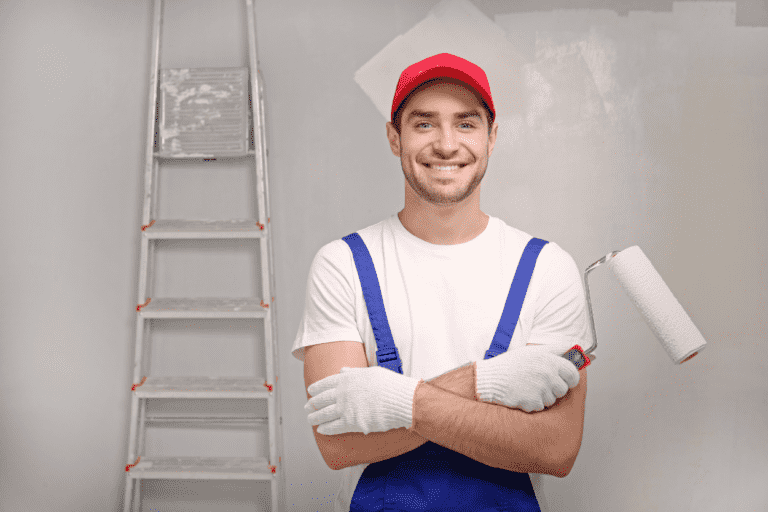
Get Professional Interior Painting Done Right in Westport, CT!
Bring fresh color, clean finishes, and long-lasting results to any home with expert interior painting services in Westport, CT. Whether it’s a full repaint or selected room updates, Custom Colonial Painting delivers high-quality craftsmanship using premium materials and detail-focused techniques. Every project in Westport, CT, is handled with care, from preparation to the final coat, ensuring a smooth, vibrant look that lasts.
Contact Custom Colonial Painting today for a free quote in Westport, CT!
